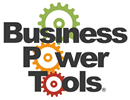How to Prepare a Compelling Press Kit
The press kit is used to help reporters get a full understanding of your company or product. It can be sent to reporters when you make a significant news announcement, hand-delivered when you meet with them for an interview or demonstration, or placed in the press kit room at trade shows and conventions.
Or, you can copy of these files described below saved as .PDFs and attached them to an email.
Perhaps first drag them all into a folder, save-as a .zip file, and entitled “[Company Name] Press Kit”
Press kits are strongly recommended for introducing your company and your products to reporters. However, if you are on a tight budget, you can just provide a press release to reporters. If you’ve followed the guidelines in the previous chapter for creating a press release, you’ll have provided the essentials that most reporters will need.
It can contain any combination of the following informational pieces about you, your company or your product:
Press Release: This is an announcement of news that describes how your product (or service or event) will benefit a particular audience. (See Writing Effective Press Releases for a thorough discussion.)
Company Backgrounder/Fact Sheet: A backgrounder is a summary of your company’s history, including a description of your products and profiles of the founders and managers. A Fact Sheet condenses the most important points about a company into a one-page format.
Comparison Charts: These charts provide a side-by-side view of your product and its closest competitor or competitors. The names of the companies and products normally go across the top of the chart, while the features go down the left hand side. For each product, either a “Yes” or “No” is listed to indicate whether or not the product has that feature.
Reasons to Review: These are one-page sheets that give the reporter compelling reasons to review the product.
Reviewers guidelines: These are one-page sheets with explanations of your product’s key features which reviewers may want to highlight in an article.
Case histories: These testimonials from satisfied users are told in the “how-to” form, and describe how a company or person overcame a problem by using your product.
Photographs: These can be color and/or black-and-white shots of your product or of a person mentioned in your press release.
Charts, graphs and line art: Graphics can help illustrate a story, especially one involving numbers. They can be printed on the same page as the press release or printed on separate pages.
Response card: A postage-paid response card that reporters can return to you to request a copy of your product, photos or more information.
Press Kit Format
The press kit materials are usually assembled in a folder that has two flaps or pockets on the inside. You can buy colorful folders at stationery supply stores or from a printer. Look for strong flaps that are attached on two or three sides to securely hold your materials. Also, be sure that the flaps are only three or four inches high – any higher may obscure the headline and first paragraph of your press materials (you want these materials to be easily viewed, as reporters may only scan the press kit). The right-hand flap of the folder may have slots for holding a business card.
Assemble your press kit folders carefully
If you want to present a physical folder… The right-hand flap should contain the lead press release that explains what is news. Behind that press release, you can put earlier press releases about that product or other products you sell. On the left-hand side, the company fact sheet or backgrounder should be in front. Case histories, reviews, press articles and other materials can be inserted behind. If you print a photograph, it should be the first item on the left-hand side. If you print slides, place them in a clear sleeve and staple the sleeve to a sheet of paper or to the top of the left-hand flap. If you include a reply card, it can go on either side. Insert your contact person’s business card in the slots on the right-hand flap.
